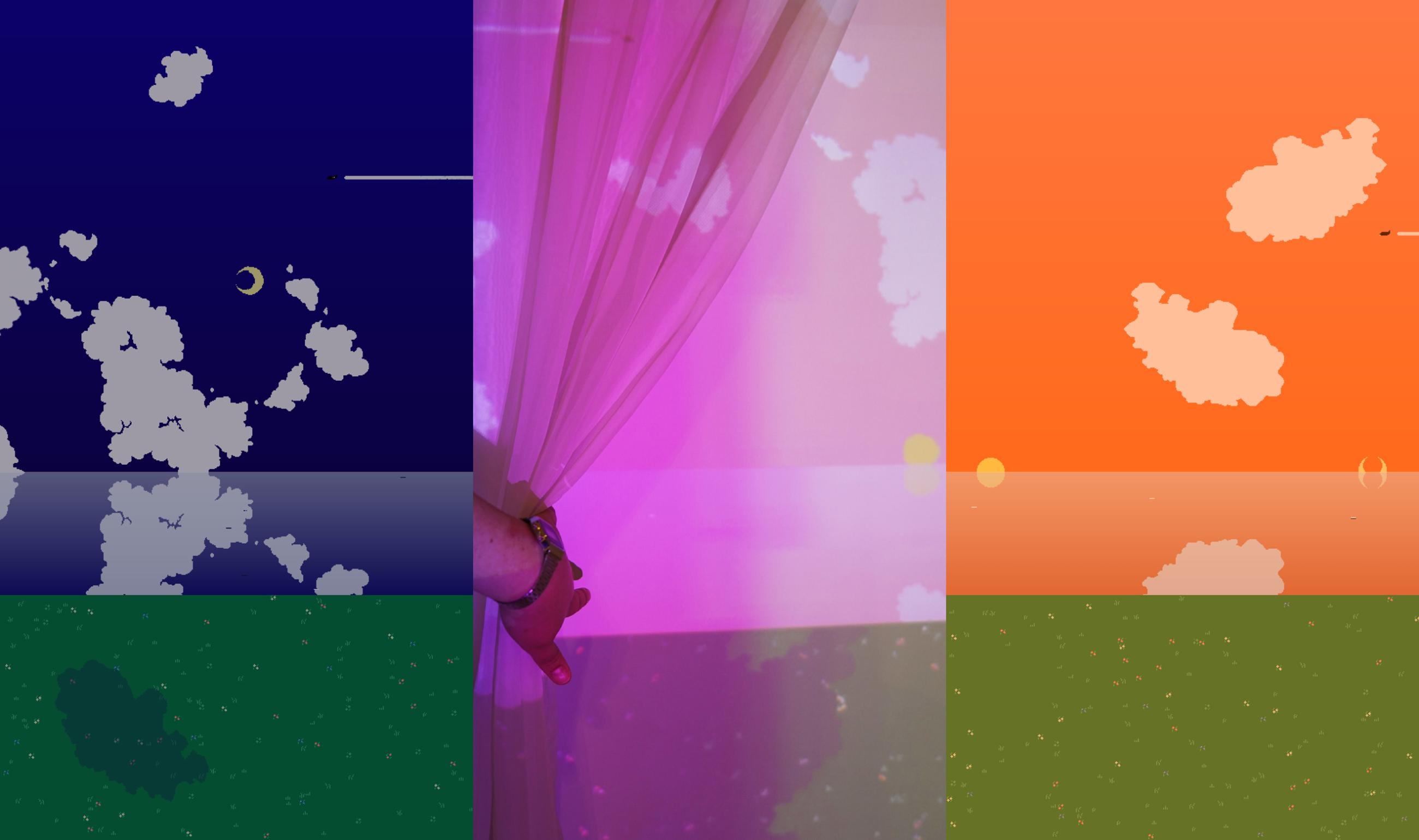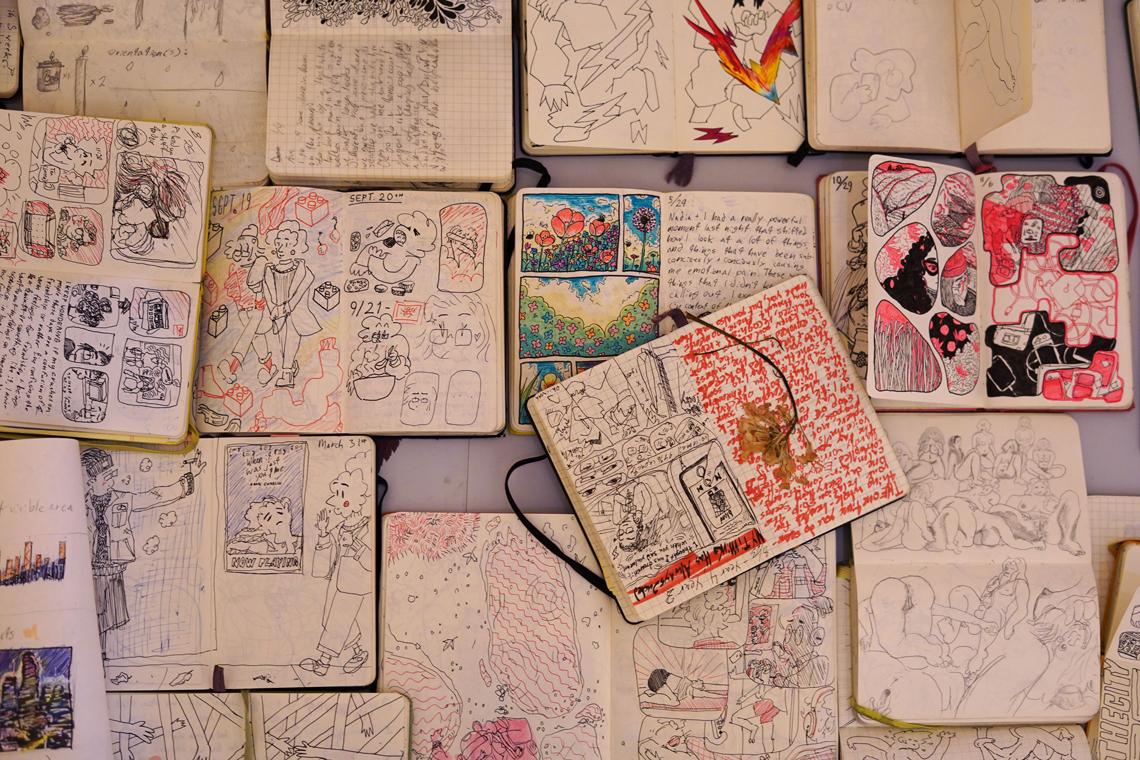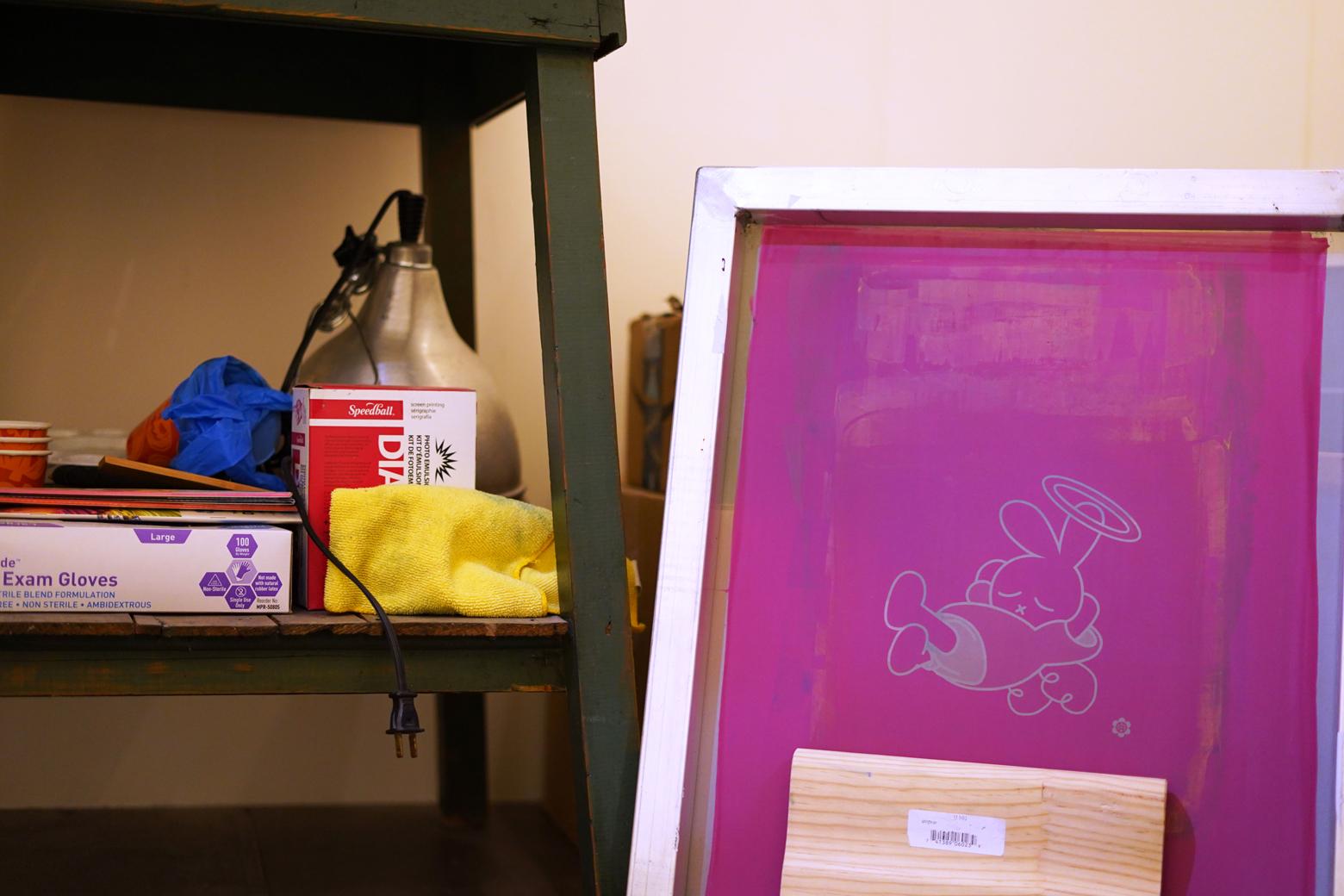This series highlights working artists currently on staff at the Frye Art Museum. The Frye has a wealth of talented Seattle-based artists working under its roof in many different capacities, each with their own dedicated arts practice outside of their work at the museum. Facilitated and written by Alexis L. Silva, Curatorial Assistant, this series is meant to highlight and celebrate these individuals, showcasing their amazing work and arts practices.

By Alexis L. Silva
I have a bit of a confession to make. As a child, I developed the fear of falling into the sky. Casadastraphobia, as it’s called, is the fear of falling into the sky or floating upwards. I remember lying down in an open field staring up at the vast Las Vegas sky wondering where it started and where it ended. Suddenly, a deep fear in the pit of my stomach overwhelmed me. I could feel myself lifting off the ground and falling upwards with nothing to grab but the air around me. I shot up dizzied by the experience and gripped the grass beneath me, hoping it would calm my nerves and remind me that I was still planted on the ground. Since then, if I watch the sky for a little too long, the fear trickles up again. While the fear is not as strong, the sensation of being lifted up off the ground is still very present. Sometimes I do wonder what it would be like to just let go and fall upwards. To let my body go and just find comfort in the lack of everything.
While I may never get to experience this flight to nowhere, I can imagine what it must feel like when looking at certain works of art. These feelings definitely bubbled up when I was able to step into Zack Kunisawa-Conklin's world. Zack is a security officer at the Frye, where they monitor the museum’s exhibition galleries to maintain the safety of patrons, staff, and artwork. The otherworldly beings and tranquil open skies that Zack creates elicit ideas of fantasy, play, and expansive dreamscapes only brought forward in your wildest imagination. I was able to chat with Zack about their practice and get to know more about what inspires them to create these works.
Tell us about your background. What brought you to Seattle and what keeps you here?
I grew up in a rural town in eastern Washington of about 400 people. The final years in my hometown, Oakesdale, I was eager to get out and have new experiences, and I think I was most excited to learn more about myself. I made the move to Seattle to attend Cornish College of the Arts, where I studied comic arts, graphic design, and philosophy.
After graduating, I found myself leaning towards video games, being a lifelong fan of the medium. I always wanted to make games, but as a kid never really knew how one went about that. Seeing the industry become more mainstream, resources for learning became more easily available. I took it upon myself to learn to program my digital artwork in pretty unconventional ways. As a self-taught programmer, my practice leans into much of my art and design background which gives me room to explore other aspects of the medium such as music, sound and story.
Things that keep me here the most would have to be my close friends, the proximity to nature, and the food. As a third-generation Japanese resident and given Seattle’s rich sense of history with my community, there is a lot more space to explore my heritage here than where I grew up in The Palouse.
In addition, given the way our government is headed, I also feel lucky to have ample access to gender-affirming care, and a community that’s energized by Democratic Socialism and funding the arts.
Can you talk about the dreamlike quality of your work and how you choose your imagery?
I get most of my ideas while I’m daydreaming and fantasizing. I draw what I yearn for and I yearn for softness and leisure, something constantly at odds with a 40-hour, front-line work week like mine. I try to show what makes me feel the best, like a good sunset, or a moment of stillness, a reflection signaling to myself that it’s time for a break from thinking about your job or the bills or even the nightmarish rise of fascism! I try to give myself a reminder of these things in my imagery because I’ve never regretted taking a step back from a challenge, it only helps me see it for what it really is.

You dance between the digital and the analog. Can you elaborate on the process of working in these two areas and how they may cross pollinate when you’re working in the studio?
I’ve always had an interest in technology. I would often find escape in video games, the internet, unique gizmos and gadgets. Coupled with my long history of being a chronic doodler, it was easy to find the intersections. I rely heavily on analog sketching for the start of any project, whether it's plotting out how some programming magic will work in a video game, or preliminary sketches of something I want to refine. A lot of it has come down to iteration lately. I'll try an idea in several different mediums, like a drawing on a sticky-note translating to a 3D modelling or wanting to do a watercolor after working on environmental artwork for a game.
Most of my favorite work comes from doodles I make in my journal, and I’m able to bring these concepts and sketches to something more refined, but staying very close to the original doodle!

You have such a rich journaling practice, can you talk to us about what that looks like and how it informs the rest of your practice?
Much of the time I’m drawing what I wore, ate, felt like on any given day, documenting how I see myself at the time. Lately it’s chronicling the many ways that my body is changing, having been undergoing gender-affirming hormone replacement therapy for over a year now.
While at Cornish, I took an autobiographical comics class under Ellen Forney where we would make daily comics about something that happened that day and present them to the class every week. I really liked the vulnerability the format provided and it more or less stuck with me. It’s had a hand in how I romanticize my life, sometimes to a fault.
As I grow older it’s comforting that I can look back on how I’ve processed things differently and how I grew into the person I am now. It’s illuminating to see where you were at the beginning of the week versus where you are now, or even last year. The practice has gotten much more freeform as time has moved forward, but I’ve stuck with this journaling practice in one way or another for more than 10 years. You’d be hard pressed to find me out and about without a cheeky notebook in my pocket.
Challenges with this practice are that my journals don't lend themself to traditional exhibition techniques, and in practice it forces a certain amount of vulnerability and trust on my part. While uncomfortable at times, it is rewarding. The best work I make is really just what I’m making for myself, and it’s most for myself in my journal. Work of this kind is what resonates with me the most.

Where do you draw inspiration from for the characters that appear in your work?
I’ve always been drawn to satisfying character designs in cartoons and the simplification of forms in a lot of manga and anime. Even more so from the completely satisfying simplicity of Japanese video game character design of the 90’s through the 00’s. A lot of Gameboy Advance and DS titles stick out to me like Yoshi’s Island, Warioware, and some Pokémon. Then some early 3D titles, as well Kirby Air Ride, Sonic Adventure, The Multimedia project that is Final Fantasy VII, and Ape Escape for sure. I definitely gravitated towards clean character designs. A lot of games from this era were still working with a lot of limitations in terms of hardware and just how detailed they could be was really up to how many megabytes of memory a game had at its disposal. This to me is so inspiring, to be able to come up with something so perfect for the set constraints.
Tell us about your vision for the future of the Seattle arts community.
The future I see is more resources for working artists, like free and affordable studio space. Spaces like my studio at Actualize AiR grant me opportunities to meet other artists and a platform to showcase my work. After accepting the free space they’ve provided me with, I feel like my practice has been brought back from the verge of death and has enriched my life with a renewed sense of purpose.
Where can people find you? (Socials, websites, upcoming exhibitions, etc.)